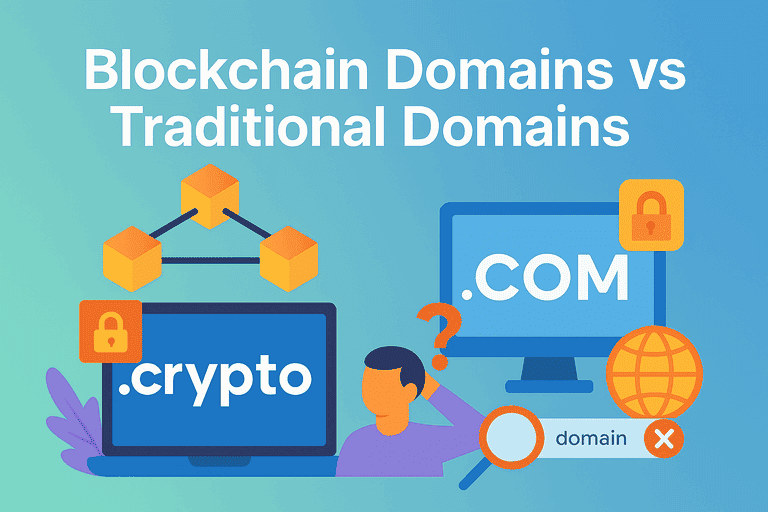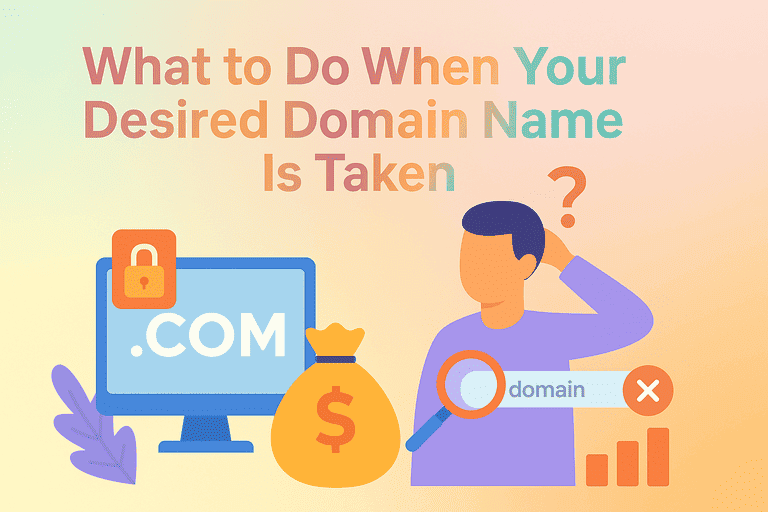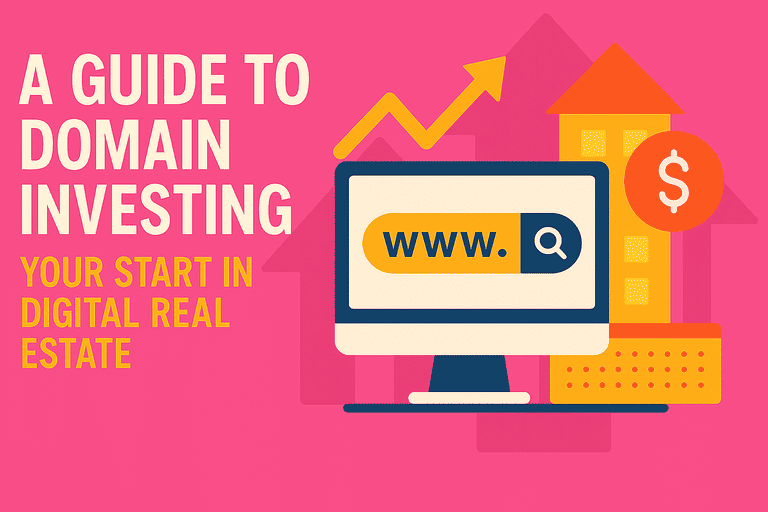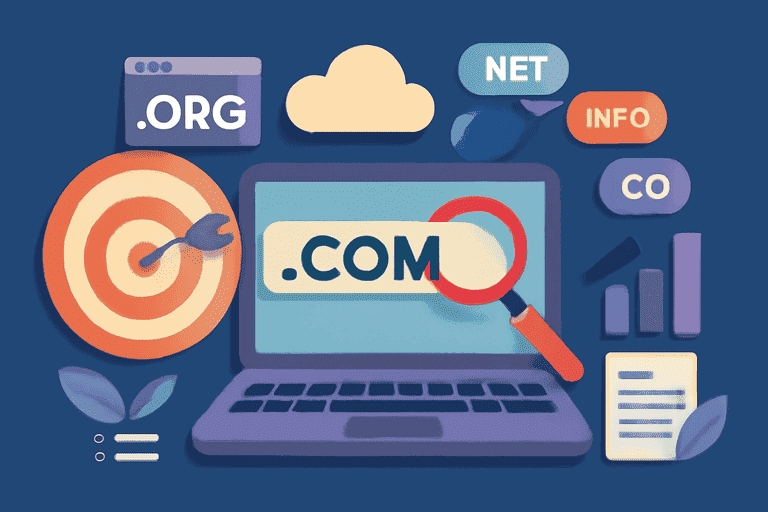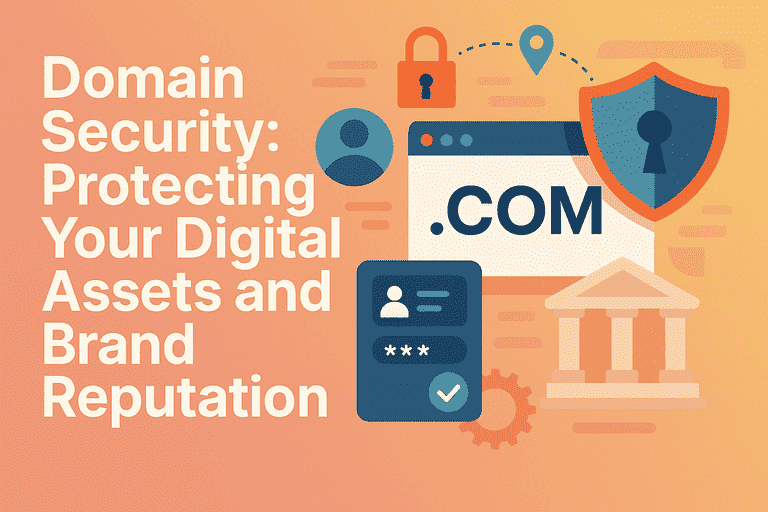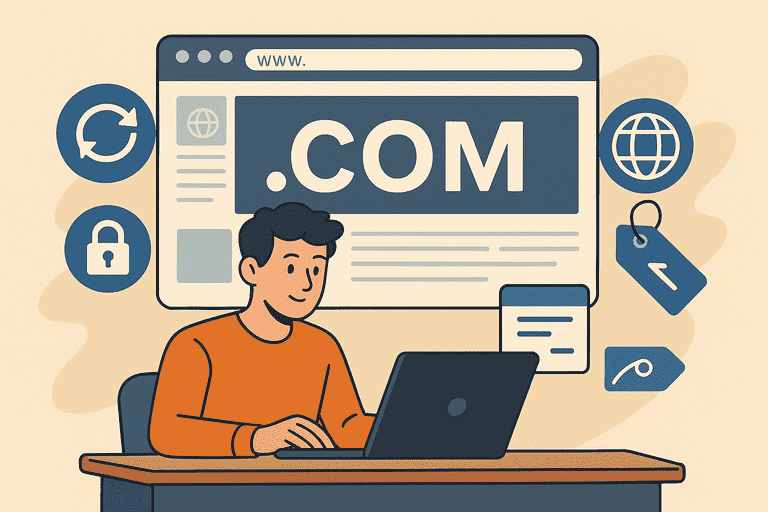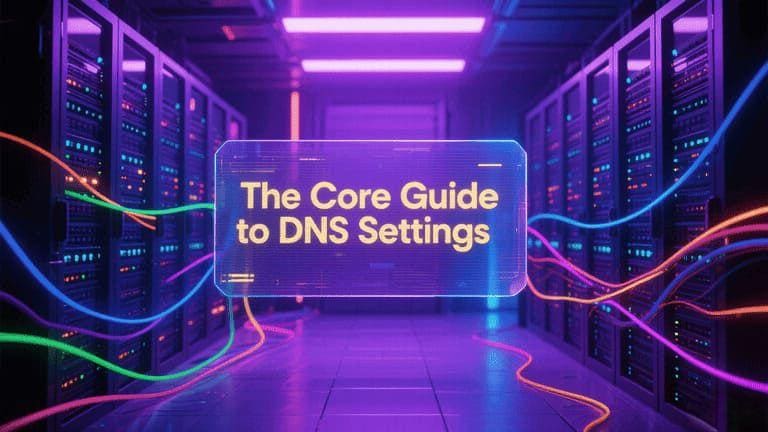Owning your own domain name is the first step toward carving out your space on the internet. Whether you’re launching a personal blog, a professional portfolio, or an e-commerce store, a great domain is the foundation of your online identity. This comprehensive guide will walk you through the entire process, from brainstorming the perfect name to successfully completing your registration.
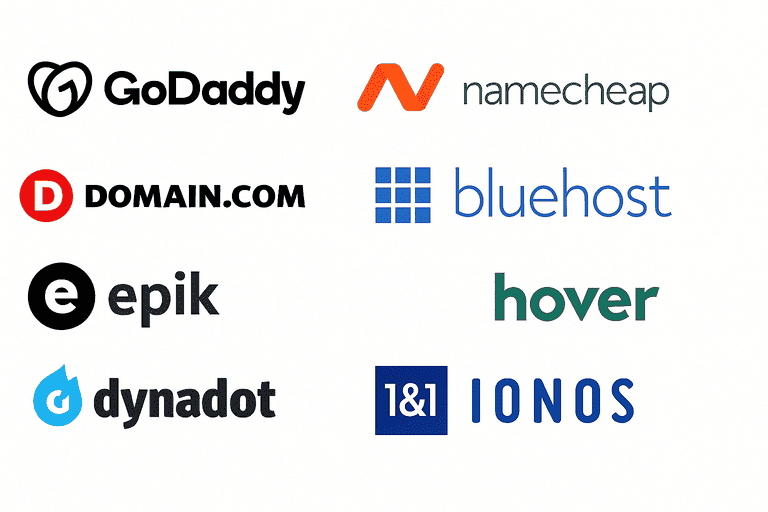
1. The Prep Work: Finding a Great Name
A domain name isn’t just a web address; it’s your brand’s first impression. A good one can significantly impact your site’s credibility, how easily users remember you, and even your search engine rankings. It’s worth spending some time brainstorming the perfect one.
Key Tips for Choosing a Domain Name:
- Keep It Short and Simple: Shorter names are easier for users to remember and type. Avoid long, complicated names.
- Make It Easy to Spell and Pronounce: Imagine telling someone your website address out loud. If they can easily spell it, you’ve found a good candidate. Avoid slang, made-up words, or confusing number/letter combinations (e.g., “o” vs “0”).
- Connect It to Your Brand or Topic: Your domain should ideally reflect your brand name or the content of your website. For example, if you run a blog about baking, including “baking” or “cakes” in the name helps users know what to expect and can aid in search engine optimization (SEO).
- Choose the Right Domain Extension (TLD):
.comis the most recognized and popular extension globally, making it the top choice for most businesses. However, other extensions can also be great options. Consider.orgfor non-profits,.netfor tech or network-based services, or one of the many newer TLDs like.store,.photo, or.blogto be more descriptive. - Be Unique and Avoid Infringement: Before you fall in love with a name, do a quick search to ensure it isn’t already trademarked or too similar to an existing brand. This can save you from legal headaches down the road. It’s also wise to check if the corresponding social media handles are available.
- Avoid Hyphens and Numbers: Hyphens are often forgotten when a domain is shared verbally, and numbers can create confusion (e.g., is it the digit “5” or the word “five”?). Sticking to letters only makes your domain cleaner and more professional.
2. Choosing a Reputable Domain Registrar
A domain registrar is a company accredited to manage the reservation of domain names. Choosing a reliable registrar is vital for the security and management of your domain. Here is a comparison of some popular international registrars:
| Registrar | Pros | Cons | Best For |
| GoDaddy | World’s largest registrar, user-friendly, offers a wide range of services (hosting, email, etc.), frequent promotions. | Renewal prices can be significantly higher than the introductory rate; aggressive upselling of extra services. | Beginners looking for an all-in-one package and familiar brand names. |
| Namecheap | Competitive and transparent pricing, free lifetime WHOIS privacy protection with every domain, easy-to-use interface. | Customer support, while generally good, can sometimes have slower response times. | Budget-conscious users and anyone who prioritizes privacy. |
| Dynadot | Very competitive registration and renewal pricing, free WHOIS privacy, clean interface, and a large selection of TLDs. | Customer support can be less responsive than some larger competitors; interface is more functional than beginner-friendly. | Price-conscious users and domain investors looking for low, predictable costs. |
| Bluehost | Very popular for WordPress hosting, often includes a free domain for the first year with a hosting plan, strong customer support. | Domain registration is primarily bundled with hosting; domain management tools are less feature-rich than dedicated registrars. | Individuals and small businesses planning to build a WordPress site and want a bundled deal. |
| Hostinger | Extremely competitive pricing for both hosting and domains, often includes a free domain with hosting plans, easy to use. | The lowest prices often require longer-term commitments. | Users who are looking for the most affordable long-term options for both hosting and a domain. |
Key factors to consider when choosing:
- Pricing & Renewals: Look at both the initial registration fee and the renewal cost. A cheap first year can be offset by a costly renewal.
- WHOIS Privacy: Prioritize registrars that offer this for free. It’s a crucial feature, not a luxury.
- User Interface: A clean and intuitive dashboard makes managing your domain much easier.
- Customer Support: Check if they offer 24/7 support through channels you’re comfortable with (live chat, phone, etc.).
3. The Registration Process: Search, Info, Pay, and Verify
No matter which registrar you choose, the registration process is generally the same and very straightforward.
- Search for Your Domain: Use the search bar on the registrar’s homepage to check if your desired name is available. If it is, great! If not, the registrar will show you it’s taken and usually suggest available alternatives with different extensions or slightly different wording.
- Add to Cart and Select a Term: Once you find an available domain you love, add it to your cart. You’ll be prompted to choose a registration period, typically from one to ten years. Many registrars offer a discount for longer terms.
- Provide Registrant Information (WHOIS Info): This is a critical step. You must provide accurate contact information for the domain owner (that’s you!). This includes your full name, address, email, and phone number. This information is legally required and serves as proof of ownership.
- Select Add-on Services: During checkout, you’ll be offered extras like web hosting, professional email, and WHOIS privacy protection. As we’ll discuss next, WHOIS Privacy Protection is a must-have. You can skip the other add-ons for now if you don’t need them.
- Complete Your Payment: Finalize your purchase using a credit card, PayPal, or another available payment method.
- Verify Your Email Address: After your purchase, you will receive an email from your registrar asking you to verify your contact information. This is a mandatory step required by ICANN (The Internet Corporation for Assigned Names and Numbers). Simply click the verification link in the email within the specified timeframe (usually 15 days). Failure to do so can result in your domain being temporarily suspended.
4. WHOIS Protection: Why You Must Enable It
When you register a domain, your personal contact details are automatically published in a public database called WHOIS. Anyone, anywhere, can look up your domain and see your name, address, email, and phone number.
Why is this a problem?
- Spam and Robocalls: Marketers and spammers scrape the WHOIS database for contact information.
- Identity Theft: Your personal data is exposed, making you a potential target for phishing scams and identity theft.
- Unwanted Solicitations: You may be contacted by people trying to buy your domain or sell you services you don’t want.
How does WHOIS Privacy Protection work?
When you enable this service, the registrar replaces your personal information in the public WHOIS database with its own generic contact information. This effectively masks your identity. If someone has a legitimate reason to contact you (like a business inquiry), the request is routed through the registrar, who then forwards it to you privately.
Given the significant privacy risks, enabling WHOIS protection is essential. Fortunately, reputable registrars like Namecheap, Dynadot, and others provide this service for free with every domain registration.
Congratulations! By following these steps, you have successfully registered your first domain name. You’ve taken a massive step in building your online presence. Now you’re ready to connect it to a website, set up a professional email address, and start sharing your vision with the world.

